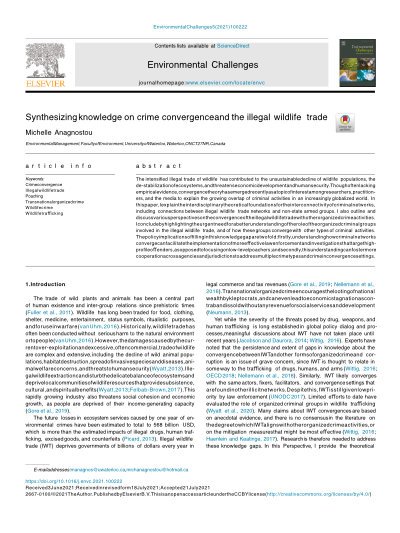By Felber J. Arroyave, Alexander M. Petersen, Jeffrey Jenkins & Rafael Hurtado
Illicit wildlife trafficking poses a threat to the conservation of species and ecosystems, and represents a fundamental source of biodiversity loss, alongside climate change and large-scale land degradation. Despite the seriousness of this issue, little is known about various socio-cultural demand sources underlying trafficking networks, for example the forthright consumption of endangered species in different cultural contexts. Our study illustrates how wildlife trafficking represents a wicked problem at the intersection of criminal enforcement, cultural heritage and environmental systems management. As with similar network-based crimes, institutions are frequently ineffective at curbing wildlife trafficking, partly due to the lack of information detailing activities within illicit trading networks. To address this shortcoming, we leverage official government records documenting the illegal trade of reptiles in Colombia. As such, our study contributes to the understanding of how and why wildlife trafficking persists across robust trafficking networks, which are conduits for a broader range of black-market goods. Leveraging geo-spatial data, we construct a multiplex representation of wildlife trafficking networks, which facilitates identifying network properties that are signatures of strategic trafficker behavior. In particular, our results indicate that traffickers’ actions are constrained by spatial and market customs, a result which is apparent only within an integrated multiplex representation. Characteristic levels of sub-network coupling further indicate that traffickers strategically leverage knowledge of the entire system. We argue that this multiplex representation is essential for prioritizing crime enforcement strategies aimed at disrupting robust trade networks, thereby enhancing the effectiveness and resources allocation of institutions charged with curbing illicit trafficking. We develop a generalizable model of multiplex criminal trade networks suitable for communicating with policy makers and practitioners, thereby facilitating rapid translation into public policy and environmental conservation efforts.
Applied Network Science volume 5, Article number: 20 (2020)





















